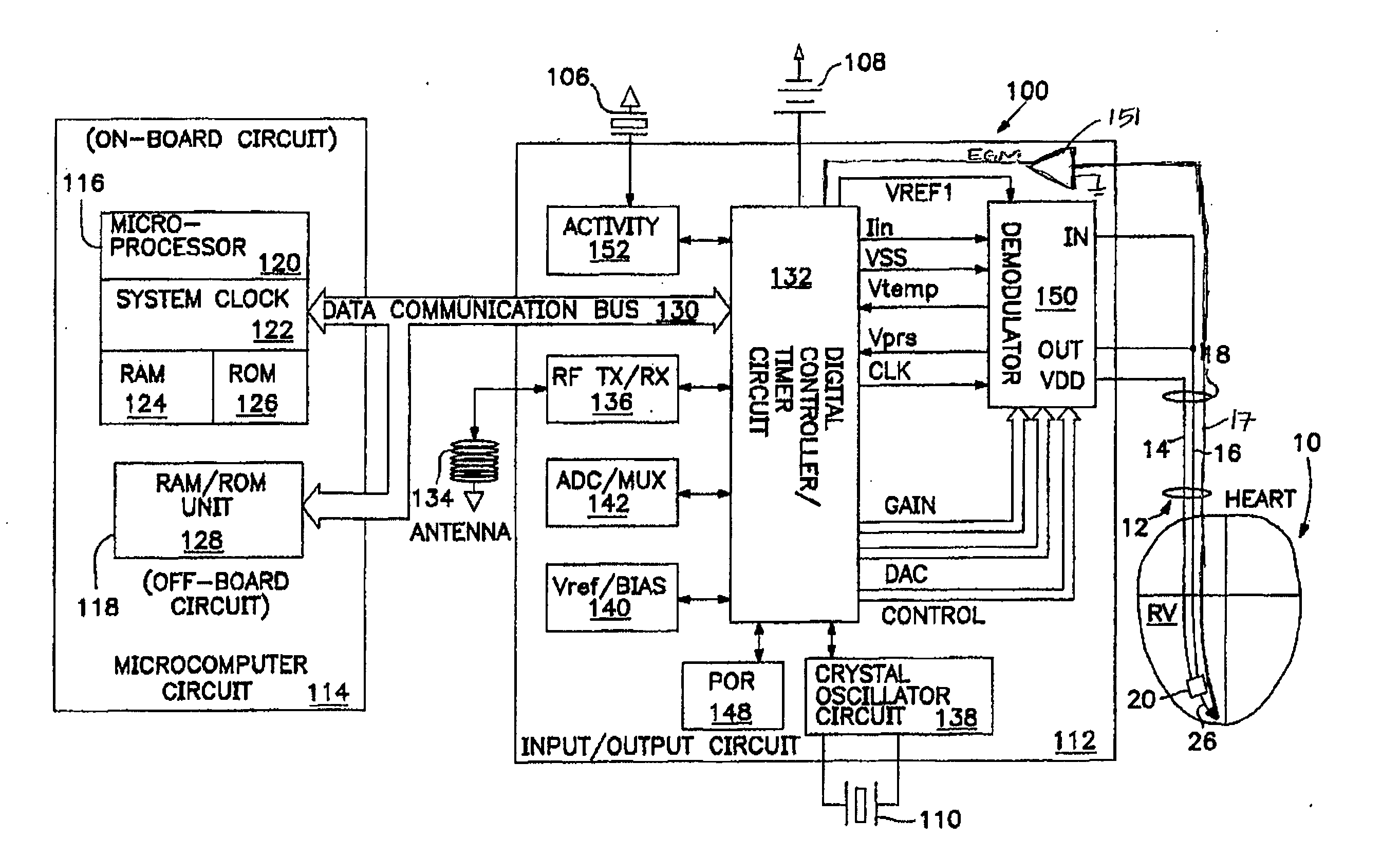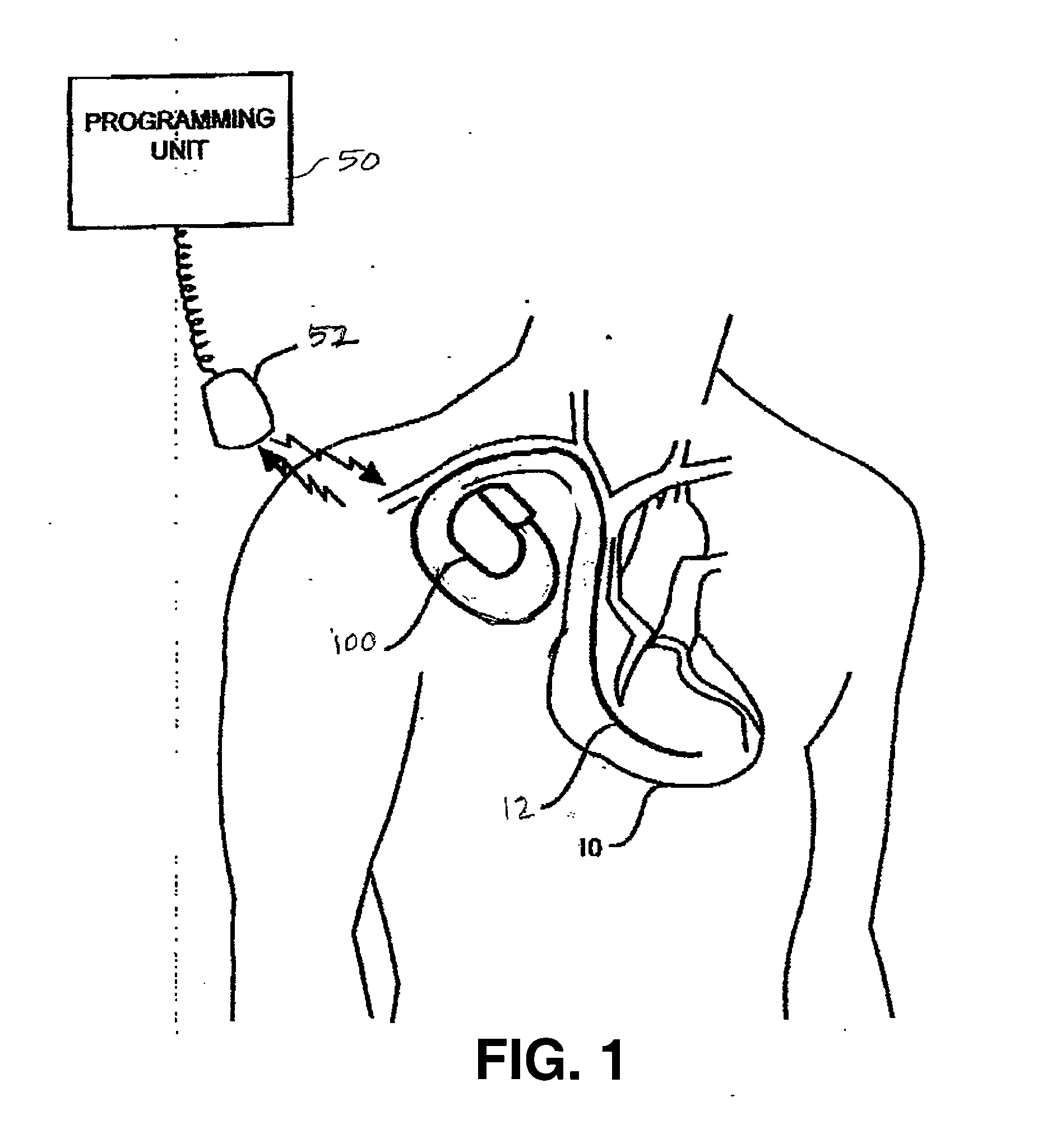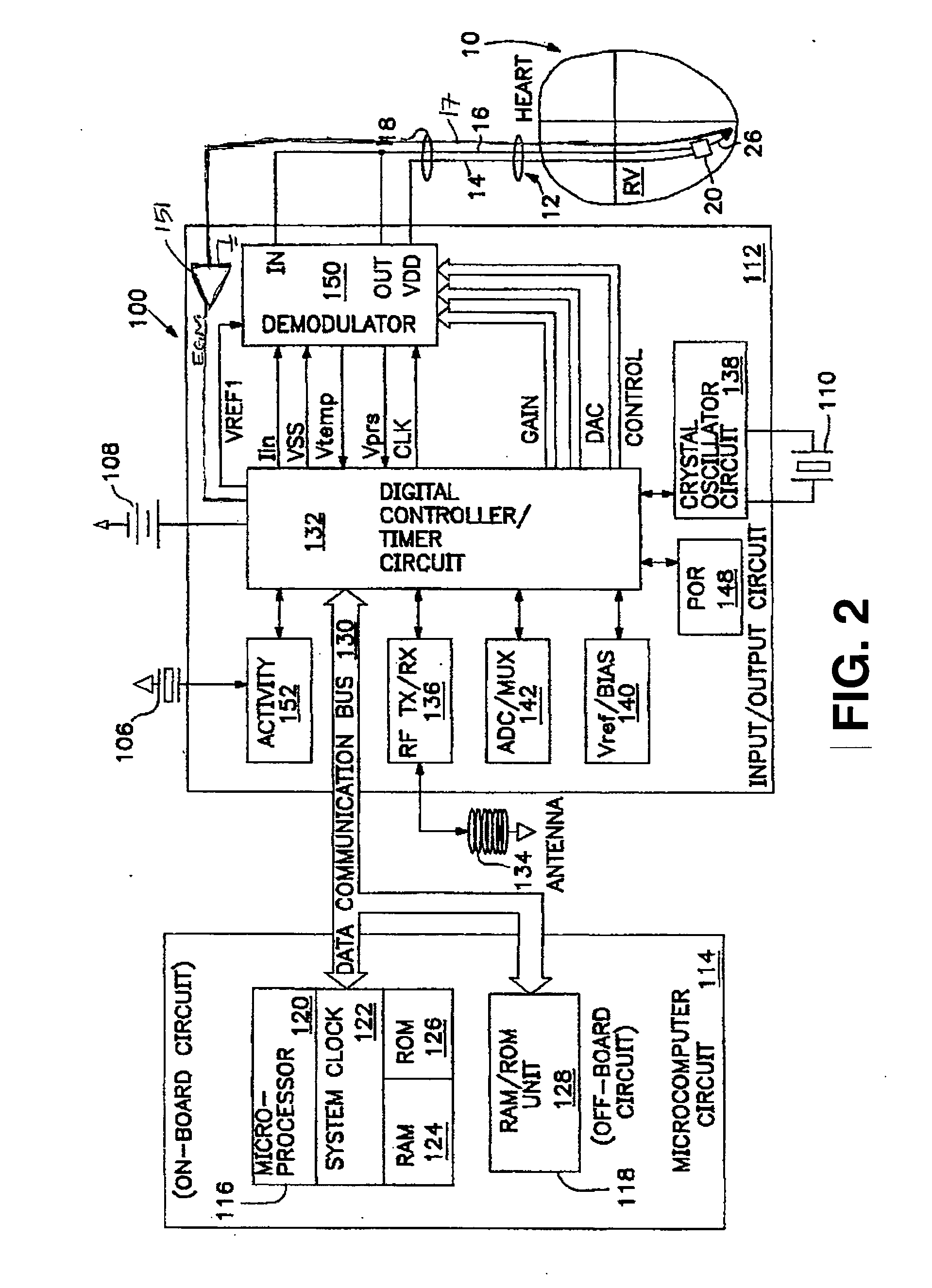Multi-level averaging scheme for acquiring hemodynamic data
a hemodynamic data and multi-level averaging technology, applied in the field of implantable medical devices, can solve the problems of difficult physician's job in treating and diagnosing a condition, significant challenge, and limited diagnostic information available to clinicians
- Summary
- Abstract
- Description
- Claims
- Application Information
AI Technical Summary
Benefits of technology
Problems solved by technology
Method used
Image
Examples
Embodiment Construction
[0023] The present invention provides a method for acquiring, processing and storing multi-level time-resolved physiological data. The methods described herein are expected to be most beneficial when implemented in an implantable medical device wherein memory capacity is limited due to device size limitations. However, aspects of the present invention may also be beneficial when implemented in an external monitoring device, such as an ambulatory monitoring device wherein limited size for wearability or transportability by the patient imposes memory size restrictions.
[0024] An exemplary implantable device in which the present invention may be usefully practiced is illustrated in FIG. 1. In the embodiment shown, device 100 is provided as an implantable device used for monitoring a patient's hemodynamic function. As such, device 100 is shown coupled to a lead 12 used for deploying one or more physiological sensors in operative relation to a patient's heart 10. Lead 12 is shown as a tr...
PUM
 Login to View More
Login to View More Abstract
Description
Claims
Application Information
 Login to View More
Login to View More - R&D
- Intellectual Property
- Life Sciences
- Materials
- Tech Scout
- Unparalleled Data Quality
- Higher Quality Content
- 60% Fewer Hallucinations
Browse by: Latest US Patents, China's latest patents, Technical Efficacy Thesaurus, Application Domain, Technology Topic, Popular Technical Reports.
© 2025 PatSnap. All rights reserved.Legal|Privacy policy|Modern Slavery Act Transparency Statement|Sitemap|About US| Contact US: help@patsnap.com



